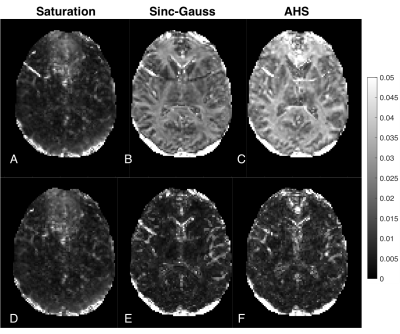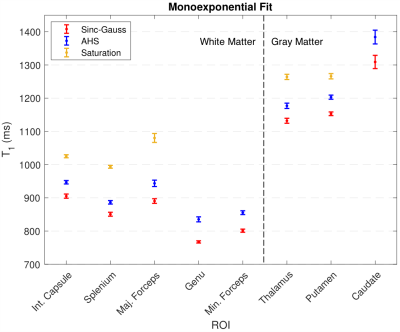Luke A Reynolds1, Sarah R Morris1,2, Irene M Vavasour2,3, Laura Barlow3, Alex L MacKay1,2,3, and Carl A Michal1
1Physics & Astronomy, University of British Columbia, Vancouver, BC, Canada, 2Radiology, University of British Columbia, Vancouver, BC, Canada, 3UBC MRI Research Centre, Vancouver, BC, Canada
1Physics & Astronomy, University of British Columbia, Vancouver, BC, Canada, 2Radiology, University of British Columbia, Vancouver, BC, Canada, 3UBC MRI Research Centre, Vancouver, BC, Canada
We performed inversion recovery experiments in-vivo using adiabatic pulses to demonstrate the subsequent biexponential T1 relaxation. We further show that a particular saturation recovery sequence can yield consistent monoexponential T1 measurements.

RMS misfit maps, computed as percentage of the maximum signal amplitude, for maps of the slice in each inversion case when fit to a (A-C) monoexponential or (D-F) biexponential recovery model. A Nyquist (n/2) ghost is clear in the anterior region stemming from the EPI readout as well as an elliptical region of B0 inhomogeneity above the sinuses in A and D. Data from this region was omitted in analysis.

